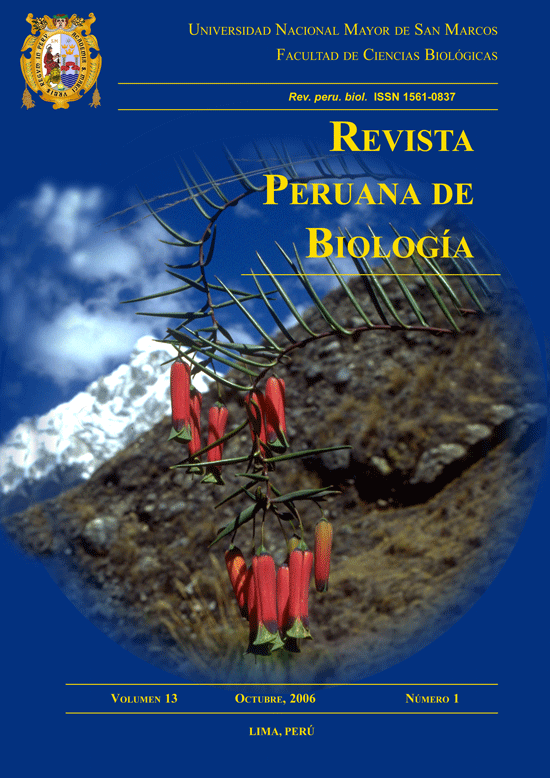Flowering and fruiting of woody plants in white-sand and clay forests in Peruvian Amazonia
DOI:
https://doi.org/10.15381/rpb.v13i1.1768Keywords:
Flowering, Fruiting, White-sand forest, clay forestAbstract
Patterns of flowering and fruiting of 176 species of woody plants in white-sand and clay forests near Iquitos, are presented. Observations were biweekly during a period of 12 months (April 2003 - March 2004). The study site were divided into 10 plots of 20 x 50 m, of which, 5 plots were established in each forest type. Flowering occurred most frequently from September to December, period in which there was an increase in precipitation. Similarly, there was a tendency for maximum fruiting from November to March. This period coincided with the season of greater precipitation (October-December), followed by a short interval period of less precipitation (January), ending in February, period of increased precipitation. Flowering lasted from 0,5 to 9 months and fruiting lasted from 1 to 10 months. In the clay forest, the flowering season showed its greater peak during the period with less rain (August-October), when 22,2% of the individuals were flowering. Whereas, in the white-sand forest, the greater peak of flowering occurred in the period of increased rain (November-December), with 19,3% of individuals flowering. On the other hand, the fruiting season in clay and white-sand forests showed two marked peaks. It tended to be greater during the rainiest period (February-March), with 20% and 23,5% of individuals, respectively, as well as during second highest rainy period (November-December) with 18,9% and 21% of individuals, respectively. The correlation index between the precipitation and temperature with the flowering and fruiting period were positive in both cases.Downloads
Downloads
Published
Issue
Section
License
Copyright (c) 2006 Ricardo Zárate, Carlos Amasifuen, Manuel Flores

This work is licensed under a Creative Commons Attribution-NonCommercial-ShareAlike 4.0 International License.
AUTHORS RETAIN THEIR RIGHTS:
a. Authors retain their trade mark rights and patent, and also on any process or procedure described in the article.
b. Authors retain their right to share, copy, distribute, perform and publicly communicate their article (eg, to place their article in an institutional repository or publish it in a book), with an acknowledgment of its initial publication in the Revista Peruana de Biologia.
c. Authors retain theirs right to make a subsequent publication of their work, to use the article or any part thereof (eg a compilation of his papers, lecture notes, thesis, or a book), always indicating its initial publication in the Revista Peruana de Biologia (the originator of the work, journal, volume, number and date).






